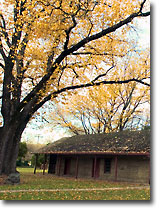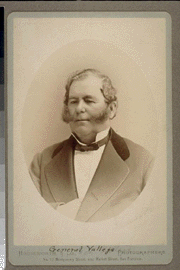 My most vivid memories are of my grandmother, since she was the one who raised me after the death of my mother, when I was three months old.
My most vivid memories are of my grandmother, since she was the one who raised me after the death of my mother, when I was three months old. As the account was related to me, when my mother was very ill, she couldn't take care of me, so my father took me to my godmother's home. At this time my father was superintendent of a large
cattle ranch, and wasn't able to care for me, so he left me in my godmother's care. Not long afterwards, my mother died. While my godmother was out shopping for the new baby, who she had left with her husband, my Uncle Joe, my grandmother arrived at their house, bundled me up and took me home with her.From that time on I lived with my grandmother and her two bachelor sons in a small farm house on the outskirts of Davis, California.
Over the years I remained very close to my Godparents, as they lived only a few blocks from my grandmother's house. My godmother's name was Mary Pena,

but I always called her "Nina". She had a daughter named Josephine, who was about eight years older than I. When I was a baby she enjoyed wheeling me around in a baby buggy, and later as I grew older, we often played together.
I had a wonderful home life, loving attention from family members, not to mention that I became very spoiled by two bachelor uncles, who catered to my whims! Often they would get between me and my grandmother so she couldn't spank me for being naughty.
Spanish was always spoken at home, that was my grandmother's choice. I learned to speak English from he neighbor's children, that I played with. Whenever I brought friends home I would speak to my "Nana" in English, because I was too embarrassed to speak Spanish in front of my friends. Whereupon she would ignore me until I finally addressed her in Spanish. No matter how I tried, she persisted and I finally gave in.
Our closest neighbors, the Phillips, had two children my age, Dorothy and Donald. We played together daily. Mrs. Phillips was a kind, soft spoken woman. It was through her encouragement that I had the opportunity to meet other children. I attended Sunday School with her children, and enjoyed other activities with them.
My grandmother was always fearful for me, and never wanted me to be too far from her sight.
"Don't worry, Mrs. Pena," Mrs. Phillips would say, "It's good for Philipa to play with other children too."
Whenever I climbed the tallest tree in their yard, my grandmother would excitedly yell at the top of her lungs (In Spanish) "Get down from that tree right now!"
Mrs. Philips felt that climbing was good for young boys and girls. The more she defended me, the braver I g ot. My grandmother was livid! When I returned home, I could be sure that I'd get my britches tanned, but it never kept me from climbing trees.

